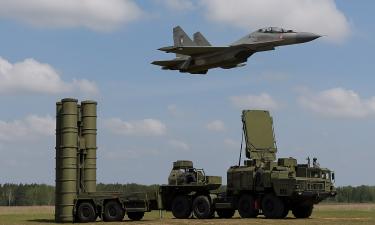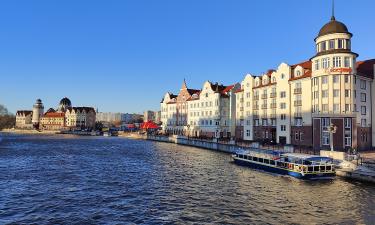Leningrad Blockade claimed two million lives during WWII
Russia marks the 65th anniversary of the lifting of the Leningrad Blockade by the Soviet troops. The siege lasted for 871 days from September 8, 1941, to January 27, 1944. The deed of the victims of the Leningrad Blockade is first and foremost the deed of common city residents, who defended their city and believed in victory under tremendously difficult conductions. However, decisions of the Soviet leadership still raise many questions with researchers. A well-known historian, Kirill Alexandrov, said in an interview with Pravda.Ru that Stalin had an opportunity to lift the blockade through negotiations with Finland.

“The number of those who died in the blockade is still unknown. The difference in numbers varies from 400,000 to several millions. How many people died during the Siege of Leningrad and what explains such a large difference in numbers?”
“According to NKVD (People’s Commissariat for Internal Affairs), it goes about 700-800 thousand victims. These data are based on extracts from the house register, which is quite a reliable source. However, it does not embrace whole categories of victims.
“In this case it goes about only the civil population, but the numbers are incomplete anyway. First of all, they do not touch upon the first months of the blockade. Secondly, they do not include the numbers of those who died after the evacuation. According to eye-witnesses, thousands of Leningrad evacuees continued to die of dystrophy after the evacuation. At last, these numbers do not include the losses among the refugees from the Leningrad region and other regions, who came to Leningrad and died in the city.
“That is why one may give only approximate numbers on the number of victims of the siege. It goes about 1-1.3 million people. I would like to repeat it here that they are only civilian victims. About 36,000 more people died from bombardments during 2.5 years. If we summarize the losses of the civil population and the military, we will have an approximate number of two million people.”
“Some people say today that the city should have been delivered to the Germans to save people’s lives. Was there such a great need in that defense?”
“There was a necessity to defend the city, of course. The strategic position of the Soviet troops would have been a lot worse if the city had surrendered. That particularly includes the destruction of the Baltic Fleet.”
“Why was the blockade lifted only in January 1944, after the successful Battle of Kursk and the liberation of Kiev?”
“The fate of the war was being solved in the center of the country, in the south, in Stalingrad and in the Caucasus. The German troops deployed near Leningrad in 1942-1943 were used as a milk-cow: the military units of those troops were often used in major battles.
“On the other hand, there were many attempts made to break the Leningrad Blockade in 1941 and 1942, albeit to no avail. The German defense was excellent – they used both the advantages of the area and the mistakes of the Soviet command.
“In addition, the Soviet government did not use Finland as an opportunity to lift the blockade. Finland was only a formal ally of Germany and had no wartime contractual obligations with the country. Moreover, the USSR’s allies in the Anti-Hitler coalition maintained diplomatic relations with Finland for a long time: Britain – before December 1941 and the USA – before the summer of 1944. Finland was a formal ally of Germany during the war, just like Japan maintained diplomatic relations with the USSR during its war against the USA in the Pacific Ocean.”
Kirill Alexandrov was interviewed by Sergei Balmasov
Subscribe to Pravda.Ru Telegram channel, Facebook, RSS!





